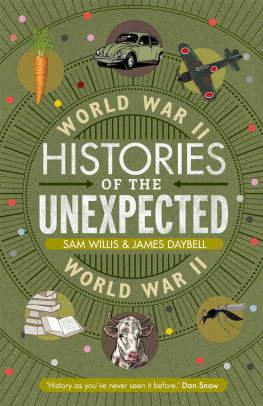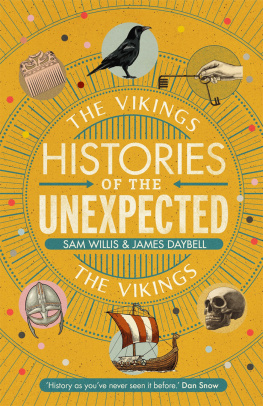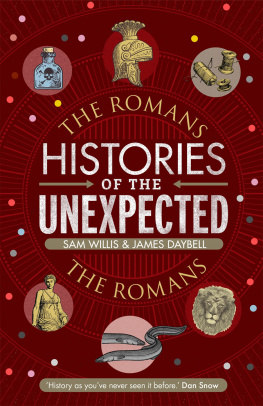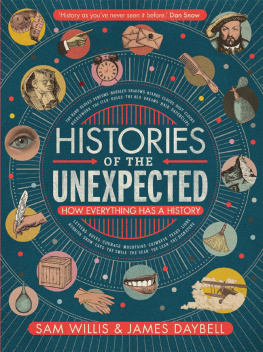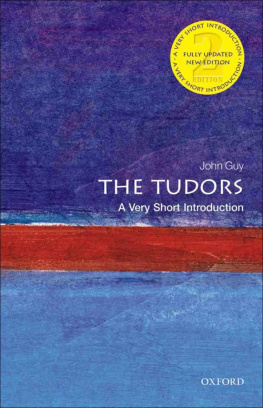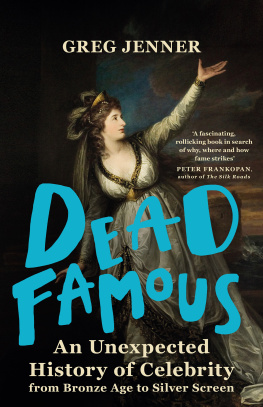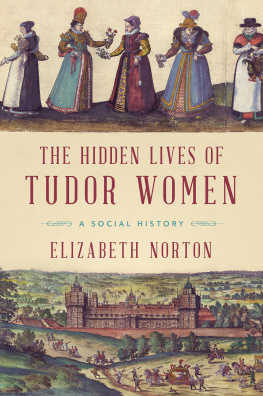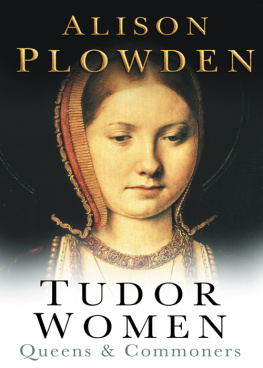Contents
Guide

By the same authors
Histories of the Unexpected
In the same series
Histories of the Unexpected: The Vikings
Histories of the Unexpected: World War II
Histories of the Unexpected: The Romans
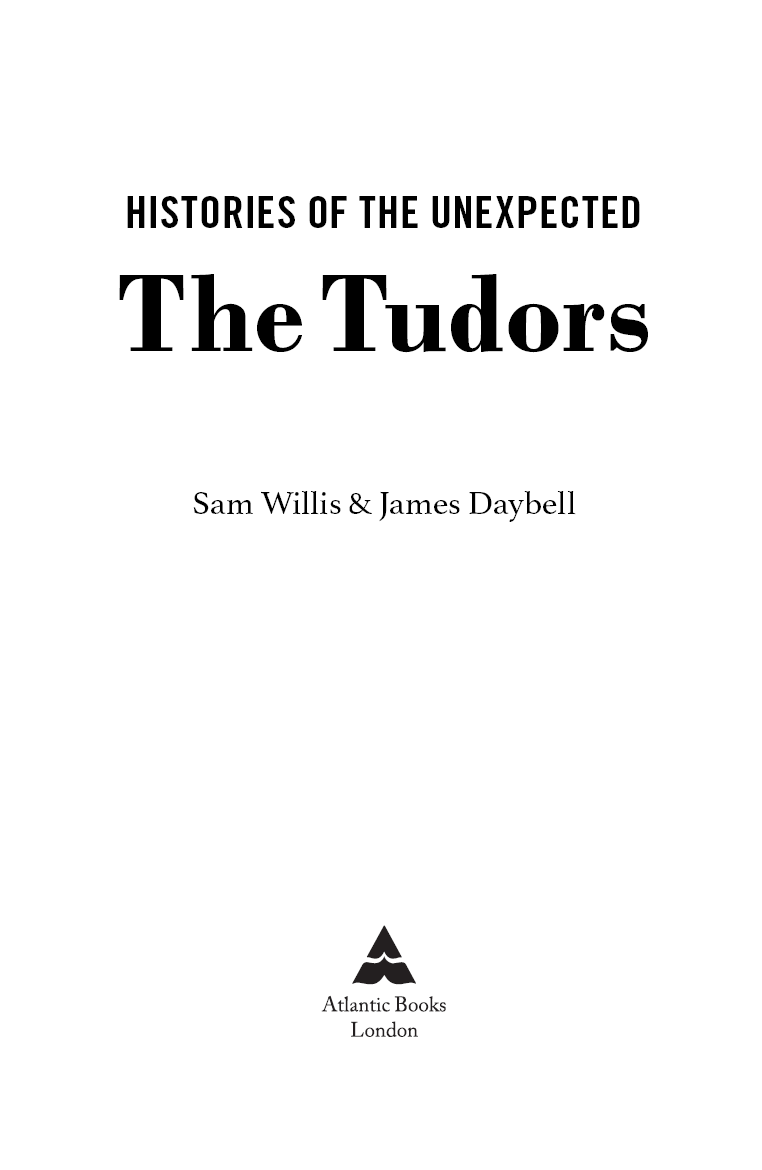
First published in Great Britain in 2019 by Atlantic Books,
an imprint of Atlantic Books Ltd.
Copyright Sam Willis and James Daybell, 2019
The moral right of Sam Willis and James Daybell to be identified as the authors of this work has been asserted by them in accordance with the Copyright, Designs and Patents Act of 1988.
All rights reserved. No part of this publication may be reproduced, stored in a retrieval system, or transmitted in any form or by any means, electronic, mechanical, photocopying, recording, or otherwise, without the prior permission of both the copyright owner and the above publisher of this book.
1 2 3 4 5 6 7 8 9
A CIP catalogue record for this book is available from the British Library.
Hardback ISBN: 978-1-78649-769-7
E-book ISBN: 978-1-78649-770-3
Printed in Great Britain
Atlantic Books
An Imprint of Atlantic Books Ltd
Ormond House
2627 Boswell Street
London
WC1N 3JZ
www.atlantic-books.co.uk
For
CONTENTS
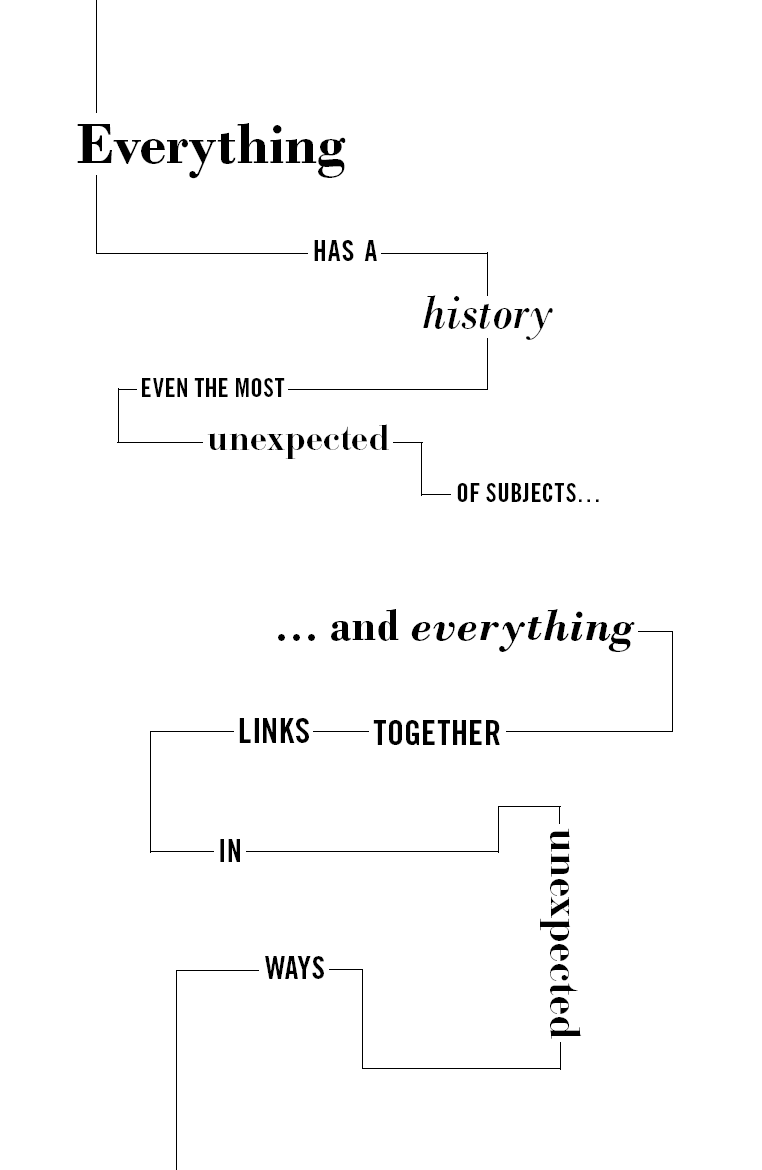
A PERSONAL NOTE
At Histories of the Unexpected, we believe that everything has a history even the most unexpected of subjects and that everything links together in unexpected ways.
We believe that the itch, crawling, clouds, lightning, zombies and zebras and holes and perfume and rubbish and mustard each has a fascinating history of its own.
In this book we take this approach into the Tudor world. You will find out how the history of shrinking is all to do with the Spanish Armada; how the history of oranges is all about Tudor spies; and how the history of monsters is connected to those famous Tudor queens Mary I and Elizabeth I.
To explore and enjoy subjects in this way will change not only how you think about the past, but also the present. It is enormously rewarding, and we encourage you all to join in! Find us online at www.historiesoftheunexpected.com and on Twitter @UnexpectedPod and do please get in touch.
ACKNOWLEDGEMENTS
This series of books is about sharing great research and new approaches to history. Our first acknowledgement, therefore, must go to all of those brilliant historians professional and amateur who are writing today and who are changing the way that we think about the past. You are all doing a fabulous job, and one which often goes unremarked and unrewarded. Thank you for your time, effort, energy and insight. We could not have written this book without you.
Since this book is intended for a wide and general audience, we have chosen not to publish with extensive footnotes. We acknowledge our indebtedness to fellow historians in the Selected Further Reading section at the end of the book, which is also intended as a spur to further research for our readers.
We would like to thank the many colleagues and friends who have generously offered ideas, guidance, support and sustenance intellectual and otherwise: Andy Gordon, Nadine Akkerman, Sue Broomhall, Anthony Caleshu, Erika Gaffney, Lee Jane Giles, Emma Haddon, Dan Maudlin, Angela McShane, Elaine Murphy, Svante Norrhem, the Lord John Russell, Adam Smyth, Jacqueline Van Gent, Suzie Lipscomb, Janina Ramirez, Phillip Northcott, Darius Arya, James Holland, Michael Duffy, Andrew Lambert and Jennie Stogdon; and among the twitterati, @HunterSJones, @RedLunaPixie, @KittNoir and @Kazza2014.
Collective thanks are also due to Dan Snow, Tom Clifford and the fabulous History Hit team for all their support and encouragement, as well as to Will Atkinson, James Nightingale, Kate Straker, Jamie Forrest, Gemma Wain and everyone at Atlantic Books.
We would also like to thank everyone (and there are hundreds of thousands of you) who has listened to the podcast or come to see one of our live events and been so charming and enthusiastic.
Most of all, however, we would like to thank our families, young and old, for everything they have done and continue to do, to cope with of all things a historian in their lives
But we have created this book for you.
Sam and James
Isca Escanceaster Exeter
The Feast of St Benedict 8-Dh al-Qadah 1440 I.VII.MMXIX 11 July 2019
THE TUDORS: AN INTRODUCTION

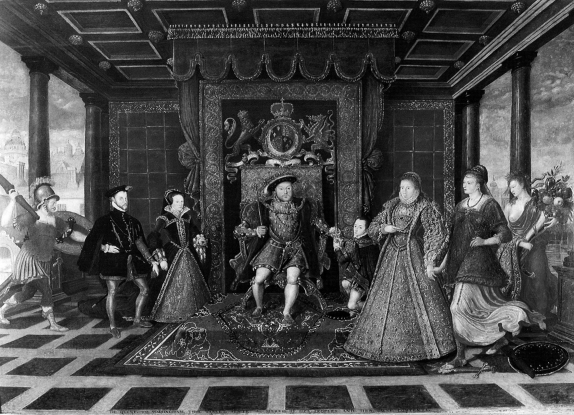
The family of Henry VIII: An Allegory of the Tudor Succession by Lucas de Heere
WHO WERE THEY?
The Tudor dynasty ruled England from 1485 to 1603. It was preceded by the House of York whose reign ended with Richard IIIs defeat at the Battle of Bosworth, finally bringing the lengthy Wars of the Roses (145587) to a close and was succeeded by James VI and I, and the House of Stuart.
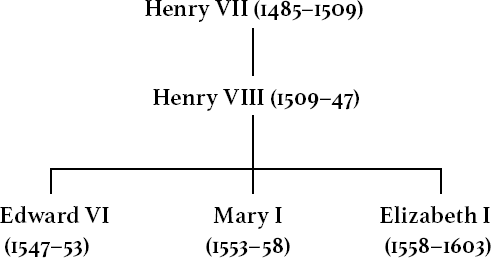
MONARCHY
Henry VII
Tudor rule began with a military victory at the Battle of Bosworth in 1485, when the forces of the Welsh-born Henry Tudor, a man with a weak hereditary claim to the throne, won against all odds. Richard III was slain on the battlefield, and the Welsh usurper became Henry VII, establishing a dynasty that ruled for almost 120 years.
Henry ruled from 1485 to 1509. He set about consolidating power at home and abroad, putting down rebellions and fending off pretenders to the throne. A bureaucratic king, when he died he bequeathed a country that was solvent and secure and, importantly, had Tudor heirs to succeed him on the throne.
Henry VIII
Henry was succeeded by his son Henry VIII (150947), an egotistical maniac famed for his six wives: Catherine of Aragon (divorced), Anne Boleyn (beheaded), Jane Seymour (died), Anne of Cleves (divorced), Catherine Howard (beheaded) and Katherine Parr (survived). He is also famed for his split from the Roman Catholic Church in 1533, after which he established the Church of England, setting himself up as its supreme head, and dissolved the monasteries.
Henry took great interest in three things his love life, religion and war but he is a remarkably difficult king to fathom: a man of tempestuous emotions and feelings, who drew people very close only to later destroy them.



